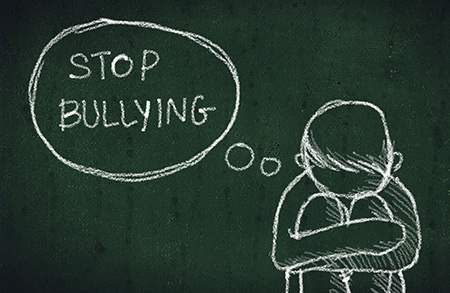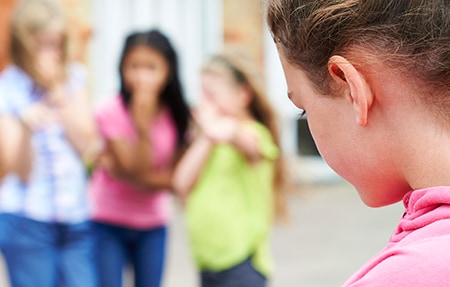Special Awareness Days
Last Wednesday in February
Pink Shirt Day

Ready to Order?
If you are ready to order, please contact Customer Service:
Telephone: 1 (800) 361-6128 Fax: 1 (800) 563-9196
Note to Educators:
Pink Shirt Day is about more than just what many consider “bullying.” It involves stigma, stereotyping, gender bias, and so much more. Although we understand that these are all extremely important issues, we are cognizant of the fact that we cannot properly address them in the short format of “What’s special about today?”
To this end, the activity bursts below focus around the fact that bullying of any kind is not acceptable, and that everyone can play a role in eliminating these behaviours by learning and practising positive social, emotional, and relationship skills.
Explore resources as well as news and events about Pink Shirt Day on their official website.
Introduction
In 2007, two teenage boys from Nova Scotia witnessed a student in their school being bullied because he wore a pink shirt. The following day, they passed out pink shirts to their school mates and encouraged everyone to wear them in support of their fellow student.
Since then, Pink Shirt Day has gained world-wide support, involving over 180 countries. Pink shirts are worn on this day to symbolize the negative impact of bullying, as well as serve as a call to action to raise funds in support of anti-bullying programs.
Bullying, both online and off, affects the lives of children, youth, and adults in schools and communities everywhere. It erodes a person’s self-confidence, self-worth, and self-awareness. We all need to play a role in eliminating bullying and promoting safe and healthy relationships

Activity Bursts
Grades K-2
Social Skills, Empathy, Art
Gather students and ask:
- What kinds of things make you happy?
- What makes you sad?
Explain that today they are going to talk about bullying.
Ask:
- What is bullying?
- Why do you think some people are bullied?
- Where can bullying happen?
- What can you do to stop bullying?
After listening to their responses, explain that bullying is about not understanding or practising how to get along with each other.
Share the story from the Introduction about the origins of Pink Shirt Day. Explain that the pink shirt represents a way to remind us that we need to be kind, considerate, and helpful to everyone.
Brainstorm ways to help stop bullying behaviours in their classroom and throughout the school and playground.
Invite students to use pink markers or pencils and create something on a piece of paper that represents being kind. It can be a symbol like a dove or heart, a word like “kind” or “love” or even a series of pink happy faces. Share results.
Close by encouraging the class to look at their creation often to remind themselves that bullying behaviours need to stop and that they can play a role in this by being kind, considerate, and respectful of everyone

Grades 3-5
Empathy, Critical Thinking, Empowerment
Ask students to talk about bullying. Prompts such as the following may be helpful:
- What kinds of bullying do kids your age experience?
- How do you think social media has contributed to the problem of bullying?
- Do you think that bullying has increased or decreased over the past few years? Why?
After their discussion, they are invited to represent the discussion in one of the following ways:
- A poster
- A word map
- A short mime (wordless skit)
Note: Discourage students from creating a scenario that involves physical bullying. Encourage using facial expressions to illustrate how someone their age might feel if they were the victim of bullying behaviour.
Ask volunteers to share their representations and explain the thoughts behind them.
After all have presented, ask:
- What kinds of bullying were represented in these presentations?
- Were there any types of bullying behaviours that were missing? (e.g., physical, emotional, social, cyber)
- How do bullying behaviours cause harm? Explain.
- What are some ways that you can play a role in eliminating bullying in our school?
Ask students what they could do as a class to remind others that bullying behaviours are hurtful and harmful. Here is one idea:
- Write a series of one-line expressions of kindness, thoughtfulness, and caring and have one of them read at the end of school each day.
For example:
- “Smile at a stranger today.”
- “Think before you say something that might hurt someone else today.”
- “Make a new friend today.”
Close by reminding students that kindness comes from the heart and that everyone can play a role in preventing bullying behaviour —not just on Pink Shirt Day, but every day!
Grades 6-8
Empowerment, Critical Thinking, Responsibility
Ask students what they know about “Pink Shirt Day.” Share responses, adding any additional information from the Introduction above.
Ask:
- Why do you think so many people have joined the Pink Shirt Day movement?
- Do you think this kind of initiative would be successful in our school? Discuss.
- What kinds of bullying behaviours do you see most often in our school? Why do you think this is true?
- What are your thoughts about short- and long-term effects of bullying behaviours for:
- the person experiencing the bullying behaviour?
- the person initiating the bullying behaviour?
- the friends and by-standers who witness the bullying behaviours?
- the school?
Ask students to think of a simple but effective way to make a difference and stop bullying behaviours in their own school— just like the two teens in Nova Scotia who started the whole Pink Shirt movement.
Encourage the ideas to come from the students, but if they need some prompting, here are a couple of simple ideas:
- Tie-Dye Fest: Tie-dye a pink shirt at home and share it with your classmates. You need pink dye, elastics, and gloves. Have fun!
- Create pink paint splash posters. You need white paper, various shades of pink paint, and brushes or sponges. Add a single word or short sentence in black to the dried paint. Share!
Plan and carry out the ideas. Remind students that even though their ideas may get implemented on a day other than Pink Shirt Day, the effort is still well worth it. Bullying behaviours (some noticeable, others, more covert) happen everywhere, every day, and so treating others with kindness, compassion, empathy, and equality are important skills to develop and practise every day!






